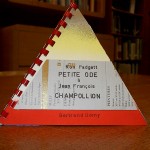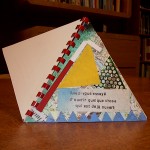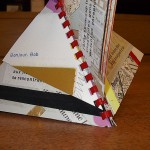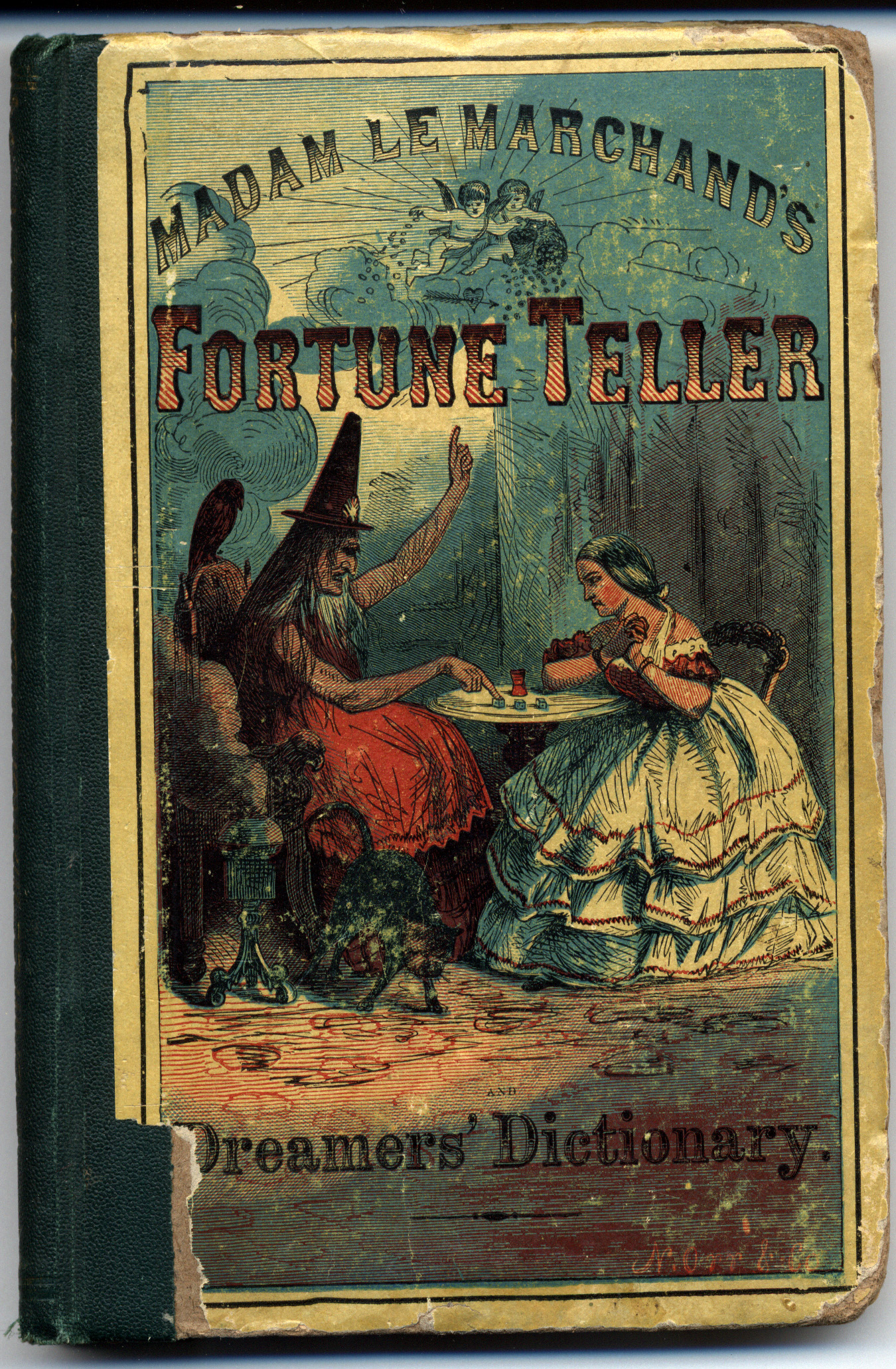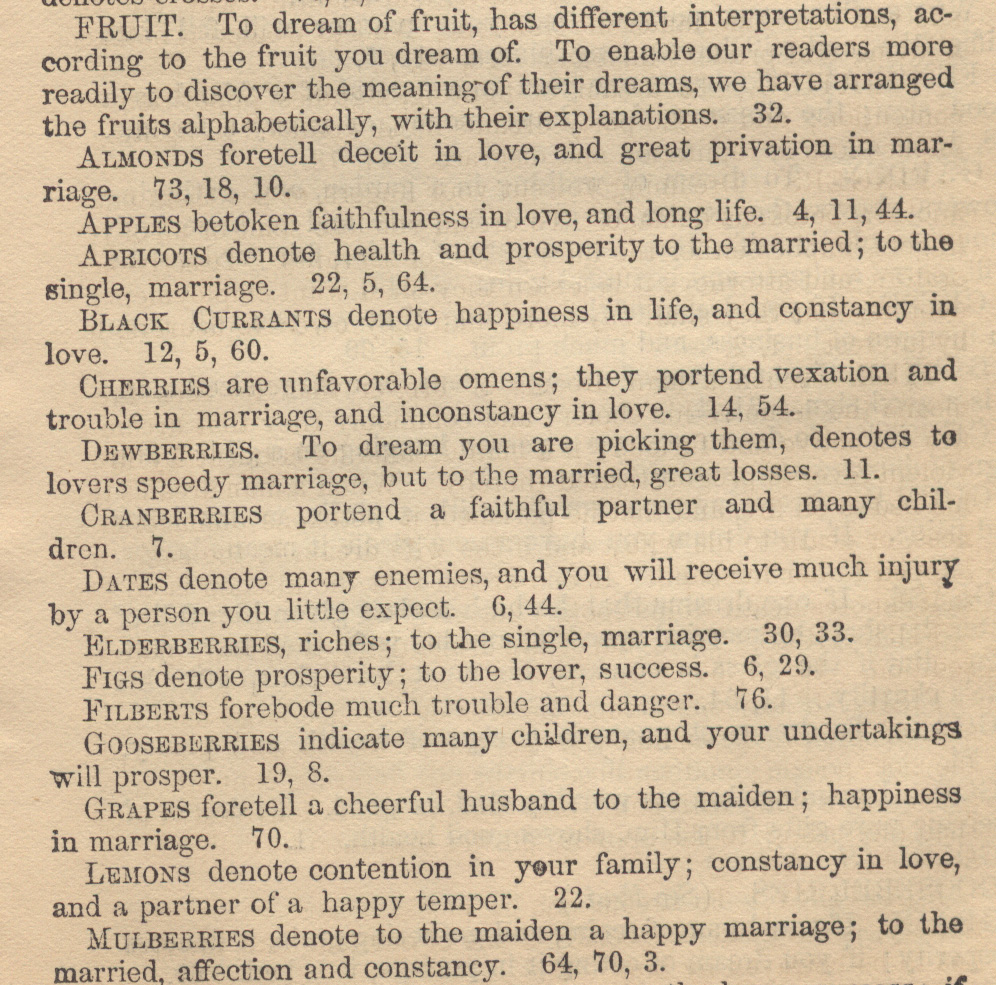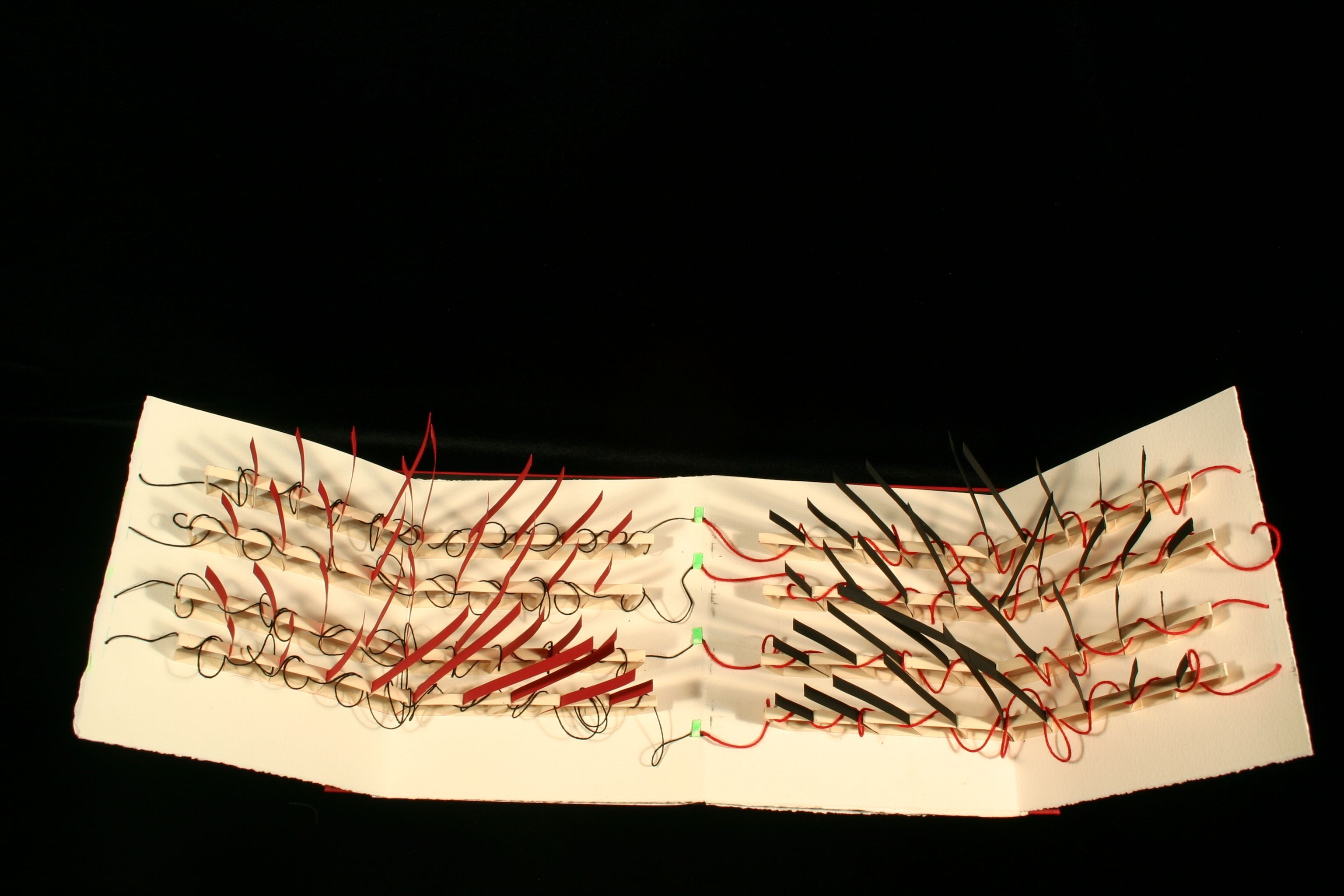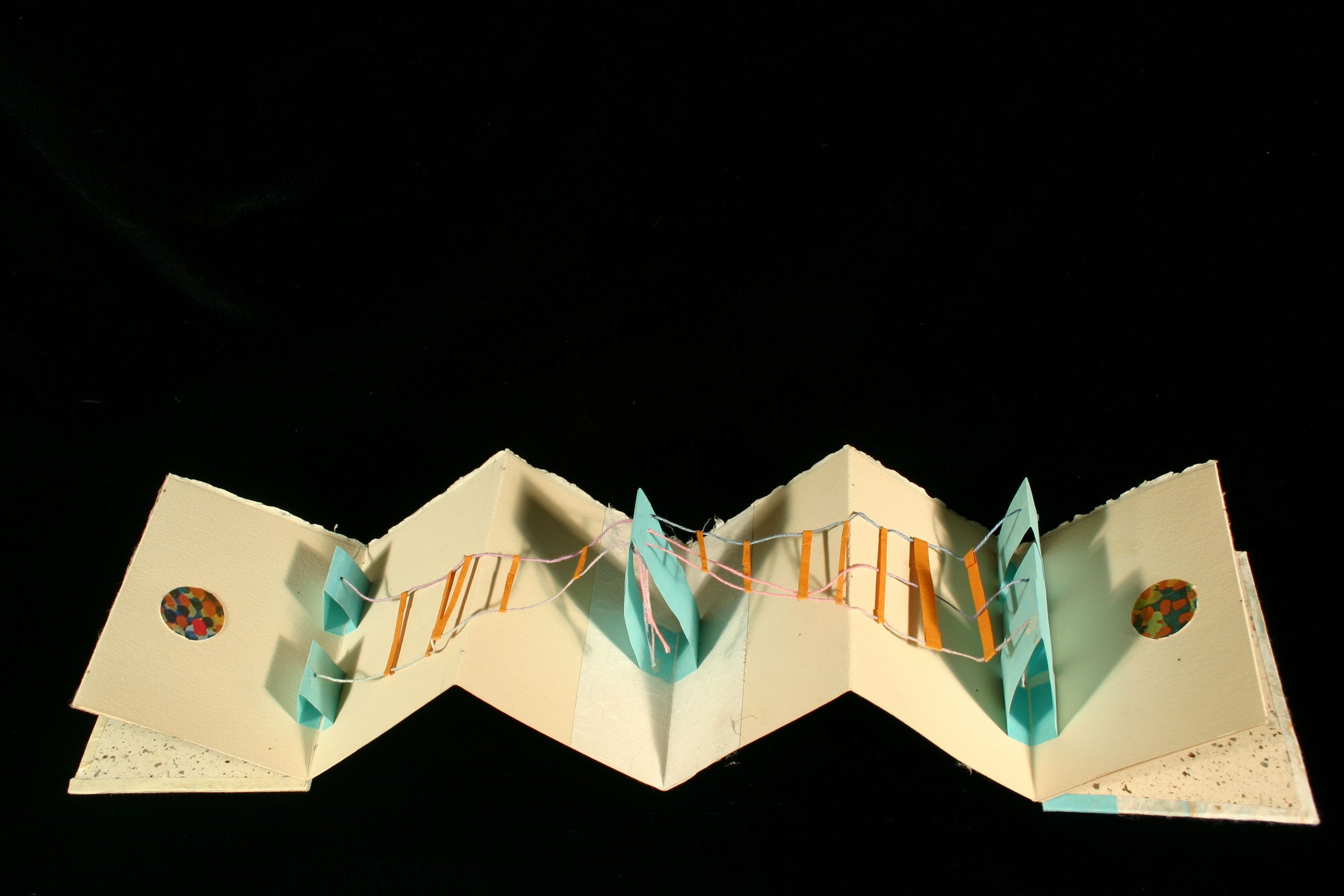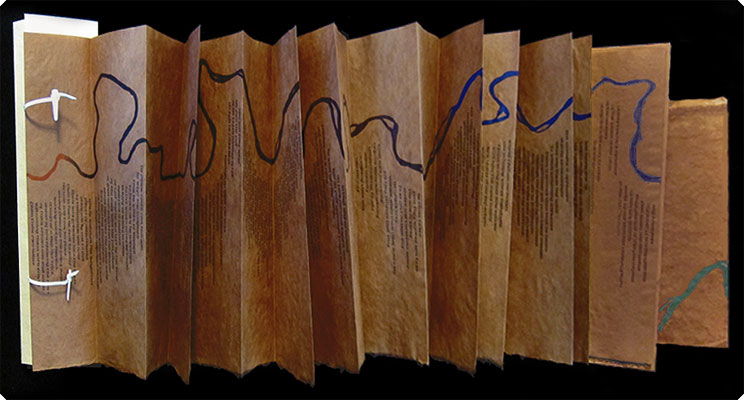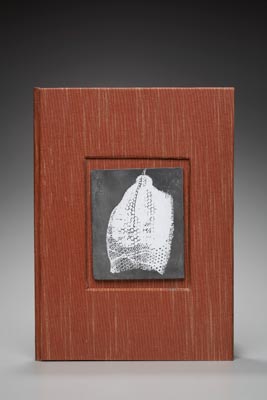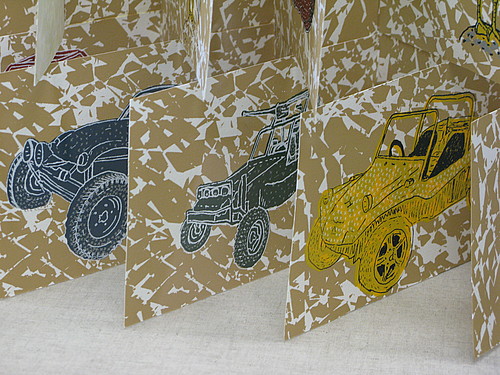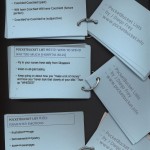 Special Collections is home to the Colorado College Zine Collection, an eclectic mix of low-price, semi-home-made, small-circulation publications. We recently acquired a complete set of J Diego Frey’s PocketBucket Lists, which are pocket-sized bundles of funny, poem-like lists of such things as “committees to avoid,” “the pillars of civilization,” and, as seen in the image, verb tenses for Coochie-Coochie. Frey also shares these lists online.
Special Collections is home to the Colorado College Zine Collection, an eclectic mix of low-price, semi-home-made, small-circulation publications. We recently acquired a complete set of J Diego Frey’s PocketBucket Lists, which are pocket-sized bundles of funny, poem-like lists of such things as “committees to avoid,” “the pillars of civilization,” and, as seen in the image, verb tenses for Coochie-Coochie. Frey also shares these lists online.
Dorny and Padgett pyramid book
In May of 2013 we purchased a copy of Petite Ode à Jean François Champollion by Ron Padgett and Bertrand Dorny. We have number 8 of 24 copies signed by the author and the artist. Each copy is somewhat different, with hand-glued collages throughout. Both the original text and the collage materials (maps, etc.) are in French. The book can be stored flat or displayed in a pyramid shape. Our particular copy comes with typed instructions from Padgett himself on how to configure the pyramid. (It isn’t difficult to configure, but those of us who find spatial relations challenging — this Curator included — will be glad to have the instructions.)
We are the second U.S. library (with Yale) and the third world-wide (with the Bibliothèque Nationale) to own a copy of this book. We look forward to sharing it with students and scholars.
Two new 16th century books
In the spring of 2013, Special Collections purchased two 16th century German books: Johann Schradin’s Expostulation (Augsburg, 1546) and David Chytraeus’s Historia der Augspurgischen Confession (Rostock, 1576).
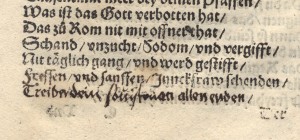 According to Blackwell Books in London (the dealer who sold us these books), the Expostulation is a poem about Ariovistus, Arminius, Barbarossa, and Georg von Frundsberg visiting the author in a dream. Perhaps of interest to book studies folks, two of its pages didn’t print properly and someone added the missing text in manuscript. This image shows the manuscript text on the verso of leaf 9.
According to Blackwell Books in London (the dealer who sold us these books), the Expostulation is a poem about Ariovistus, Arminius, Barbarossa, and Georg von Frundsberg visiting the author in a dream. Perhaps of interest to book studies folks, two of its pages didn’t print properly and someone added the missing text in manuscript. This image shows the manuscript text on the verso of leaf 9.
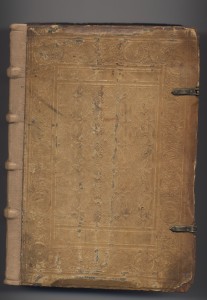
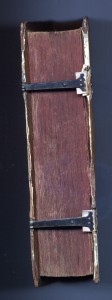 The Chytraeus has a contemporary pigskin binding with working clasps. A history of the Augsburg Confession, the text was translated into many languages and frequently reprinted after it first appeared in 1576. Our copy has marginalia from at least one previous owner and a rebacked spine.
The Chytraeus has a contemporary pigskin binding with working clasps. A history of the Augsburg Confession, the text was translated into many languages and frequently reprinted after it first appeared in 1576. Our copy has marginalia from at least one previous owner and a rebacked spine.
Dream interpretation made easy
Madame Le Marchand’s Fortune Teller and Dreamer’s Dictionary (1863) will tell you the meaning of everything in your dreams. Each fruit, for example, has a particular meaning: cherries “portend vexation and trouble in marriage”; gooseberries “indicate many children,” and filberts “forebode much trouble and danger.” (Has J.K. Rowling’s Sybill Trelawney been reading this book?)
The numbers after each entry are the lucky numbers your dreams have provided. Visit Special Collections and request the book to begin interpreting your own dreams the official 1863 way.
Postcard collages by Mary Chenoweth and the Pikes Peak Pen Women
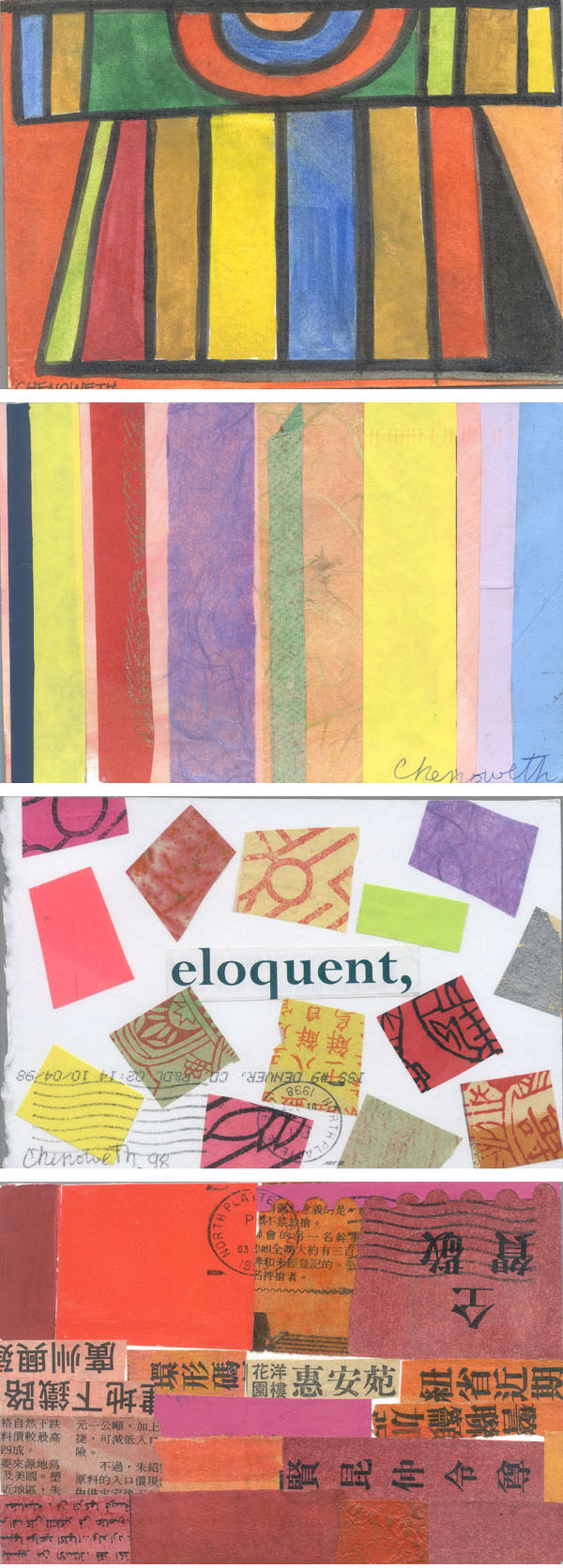 On Saturday, January 19, the Pikes Peak Pen Women visited Special Collections to learn about historical writers and artists in Colorado. They viewed the original handwritten manuscript of Helen Hunt Jackson’s novel Ramona, books by Ann Zwinger, artists’ books by Alicia Bailey and others, and postcard collages by Mary Chenoweth.
On Saturday, January 19, the Pikes Peak Pen Women visited Special Collections to learn about historical writers and artists in Colorado. They viewed the original handwritten manuscript of Helen Hunt Jackson’s novel Ramona, books by Ann Zwinger, artists’ books by Alicia Bailey and others, and postcard collages by Mary Chenoweth.
Special Collections is home to the papers of Chenoweth, an artist who taught at Colorado College from 1953 until 1983. She made sculptures, woodcarvings, woodcuts, watercolor and oil paintings, etchings, and more. Making art was an everyday activity for her, and she frequently created one-of-a-kind postcard collages and mailed them to friends and family.
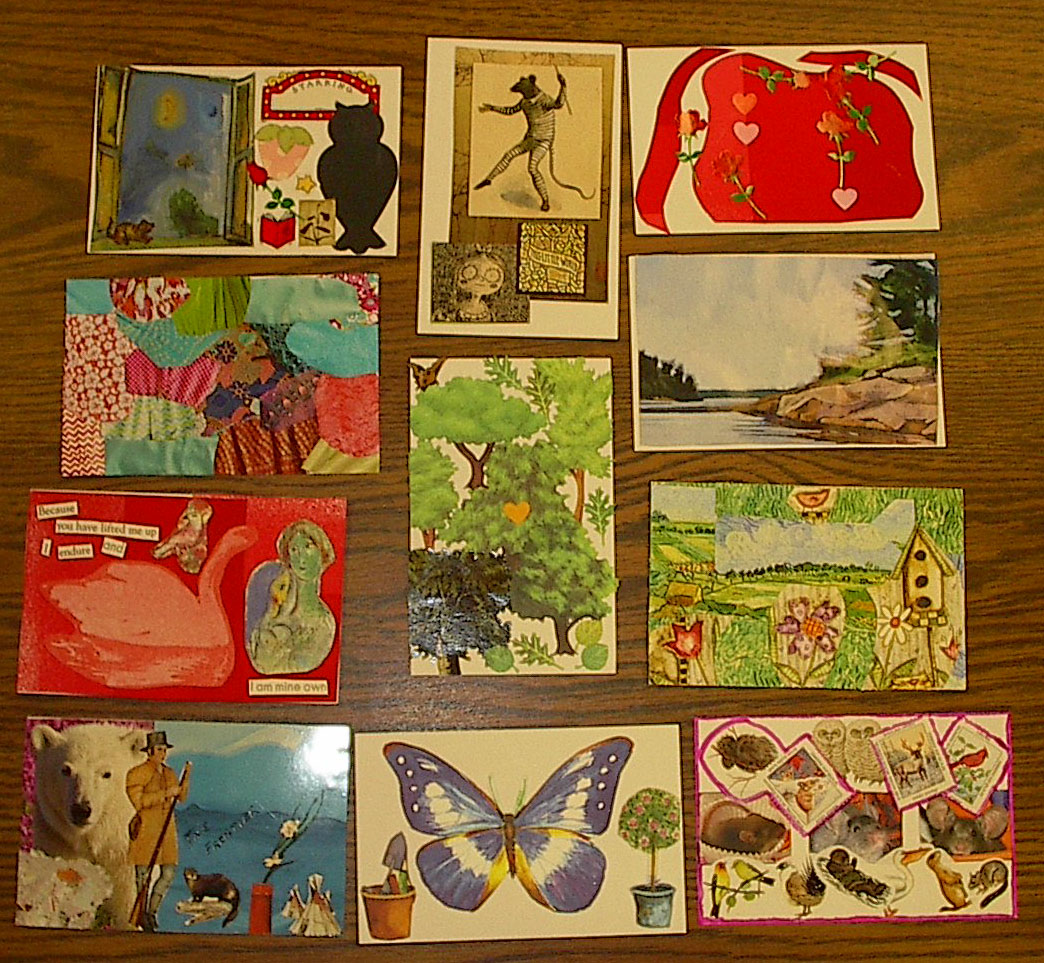 The Pen Women usually do some kind of writing exercise at their meetings. This time, instead, they made their own postcard collages, using recycled materials such as scraps from magazines and catalogs. I hope the club members will do as Chenoweth did and mail their postcards to friends and loved ones. Perhaps we can start a home-made-postcard-making trend!
The Pen Women usually do some kind of writing exercise at their meetings. This time, instead, they made their own postcard collages, using recycled materials such as scraps from magazines and catalogs. I hope the club members will do as Chenoweth did and mail their postcards to friends and loved ones. Perhaps we can start a home-made-postcard-making trend!
Two pop-up books from Debra Weier
Book artist (and CC parent) Debra Weier visited Colorado College in the fall of 2012 to give a workshop on pop-ups. The library subsequently purchased her one-of-a-kind pop-up book Charged. When she mailed us that book, Weier sent us a bonus gift: another one-of-a-kind pop-up book, Fair Play.
Thank you, Debra!
A looooooooooong Merwin poem
Our anonymous donor surprised us this month with a gift of the Ninja Press edition of W.S. Merwin’s The Real World of Manuel Córdova (1995). When stretched out, this accordion-style production measures fifteen feet long. Here’s the dealer’s description.
We look forward to sharing all fifteen feet with book arts and poetry students and other researchers in the coming years, perhaps alongside our similarly-stretchable two editions of Carlos Oquendo de Amat’s Five Meters of Poems (one from Ugly Duckling Presse and one from Turkey Press).
Our anonymous donor strikes again!
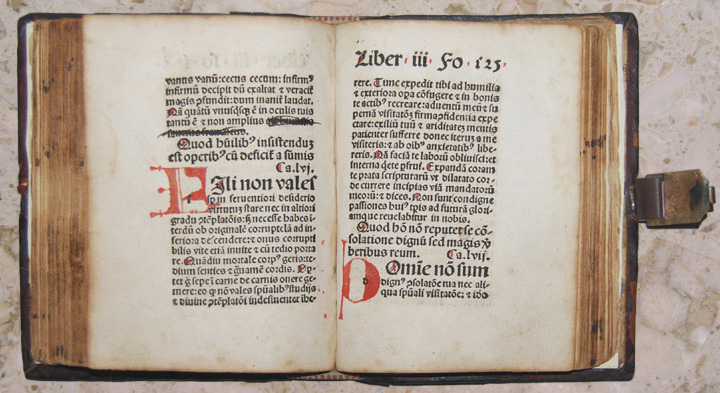 With a money gift from a very kind anonymous donor, Special Collections has just acquired our fifth incunable! (Incunabula are European printed materials from pre-1501. A list of our incunabula and early printed books is here.)
With a money gift from a very kind anonymous donor, Special Collections has just acquired our fifth incunable! (Incunabula are European printed materials from pre-1501. A list of our incunabula and early printed books is here.)
This new one is a 1492 edition of Thomas à Kempis’s Imitation of Christ, printed by Anton Koberger in Nuremberg. It’s smallish, less than six inches tall and comfortable in the hands.
Owners and censors have been “refreshing” it in various ways over its five century life. Marginalia has been excised, leaves have been replaced, words have been struck out, owners have placed their signatures and stamps and bookplates in it. We know from its scent that at least one previous owner was a smoker. We know from the dealer that the clasp has been replaced. We look forward to scholars working with it and finding out much, much more.
So, on this day-before-Thanksgiving, we say: thank you, anonymous donor! Thank you, Medieval Books, for the generous discount you provided in support of Colorado College’s minor in book studies! And thank you, book people everywhere, for loving books and caring for them so that they last and last.
Carleton College artists’ books
In September of 2012, Carleton College professor and book artist Fred Hagstrom was the Press at Colorado College’s Visiting Lecturer. Special Collections owns three of Hagstrom’s books: Deeply Honored, concerning a Japanese-American internment camp, and two newly acquired books: Standing Place, gift of the artist, a book about the marriage of a Maori man and a Greek woman, and Forces and Fossils, which was made using blown-up illustrations from Ernst Haeckel’s 1862 book on microscopic protozoa, Die Radiolarien.
While he was here, Hagstrom showed us samples of books his students at Carleton had made. We thought students here might benefit from seeing books made by students elsewhere, and have therefore purchased four artists’ books made by Carleton students and alumni: Holly Phares’s Important to My Sanity and Future, Myla Fay’s The Salton Sea Guide to Birds and Dune Buggies, Liz Giraud’s Love Hertz, and Heather O’Hara’s The Handbook of Practical Geographies.
Embroidered composition book by Candace Hicks
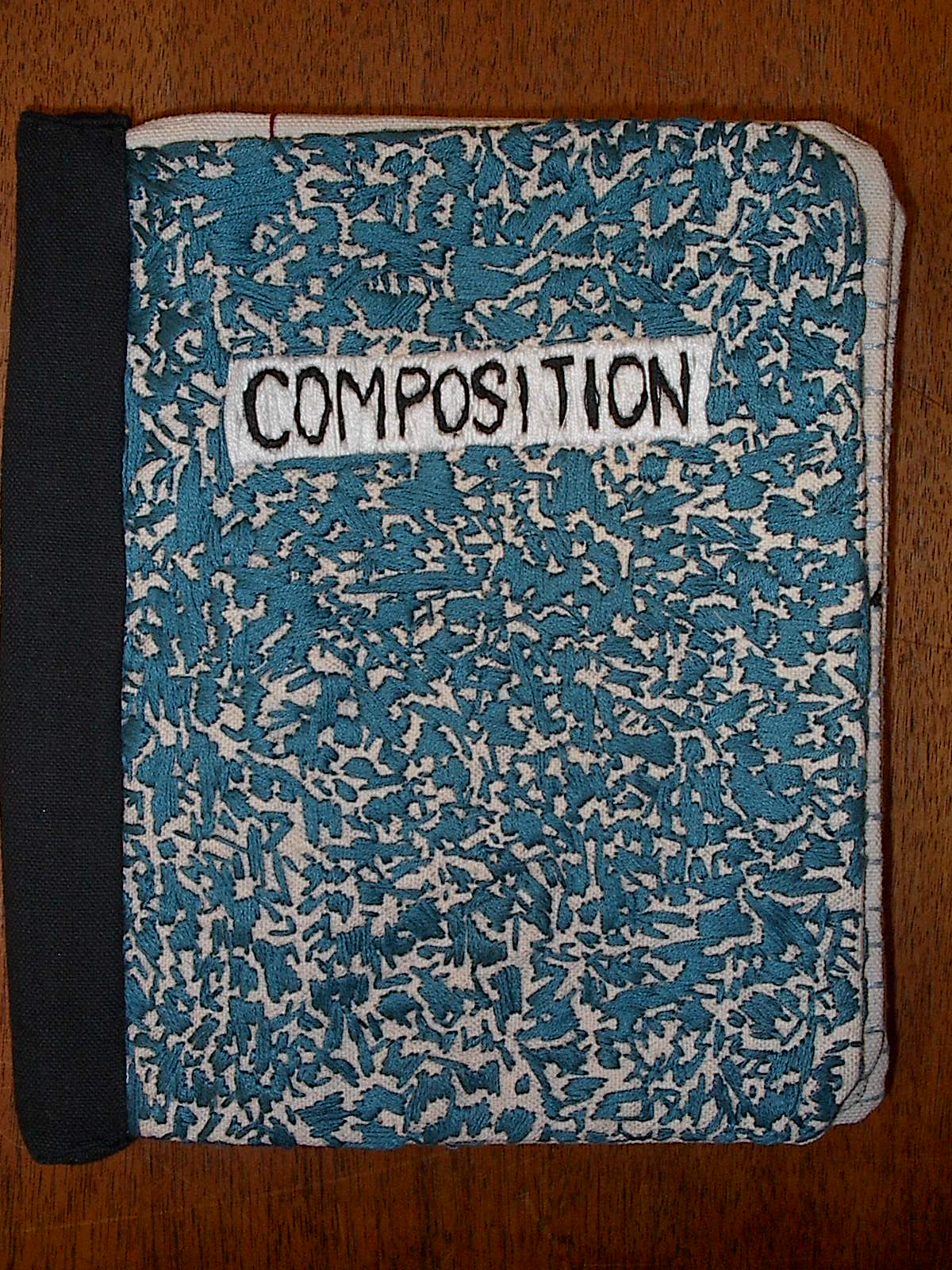
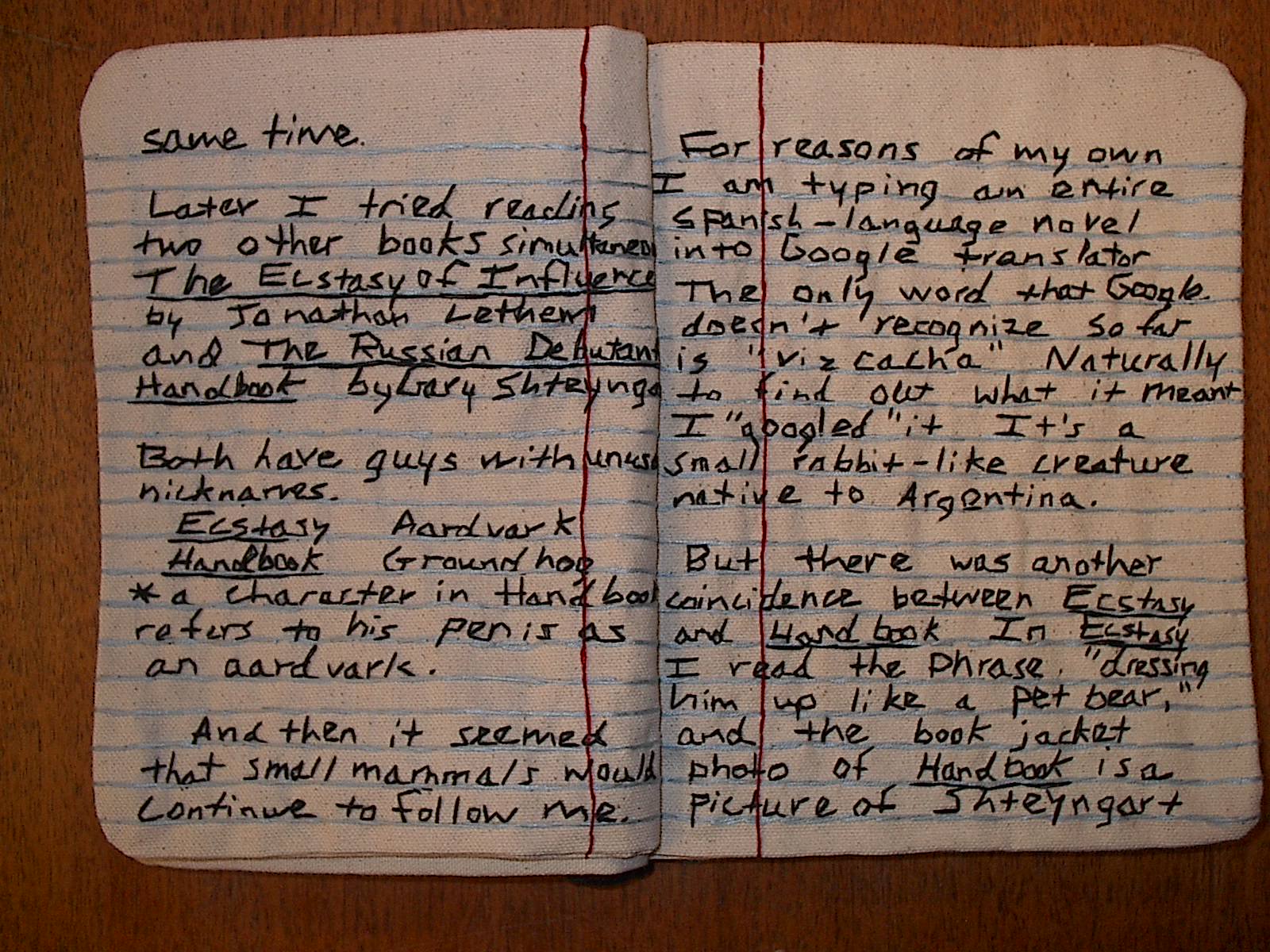
In the summer of 2012 we acquired one of Candace Hicks‘s unique embroidered composition books. Ours is “Volume XXXIII,” with a green cover. Like others in the series, it is a sort of personal reading journal, with all the text embroidered by hand. Authors mentioned in our volume include J.K. Rowling, Janet Evanovich, Jonathan Lethem, and Gary Shteyngart. The book is soft and floppy and a pleasure to handle, and several students have already admired it in our reading room.

